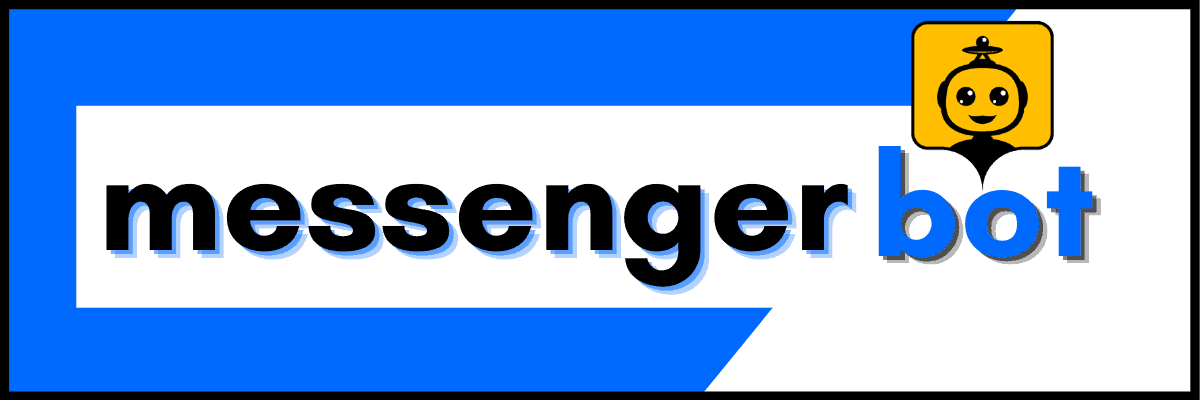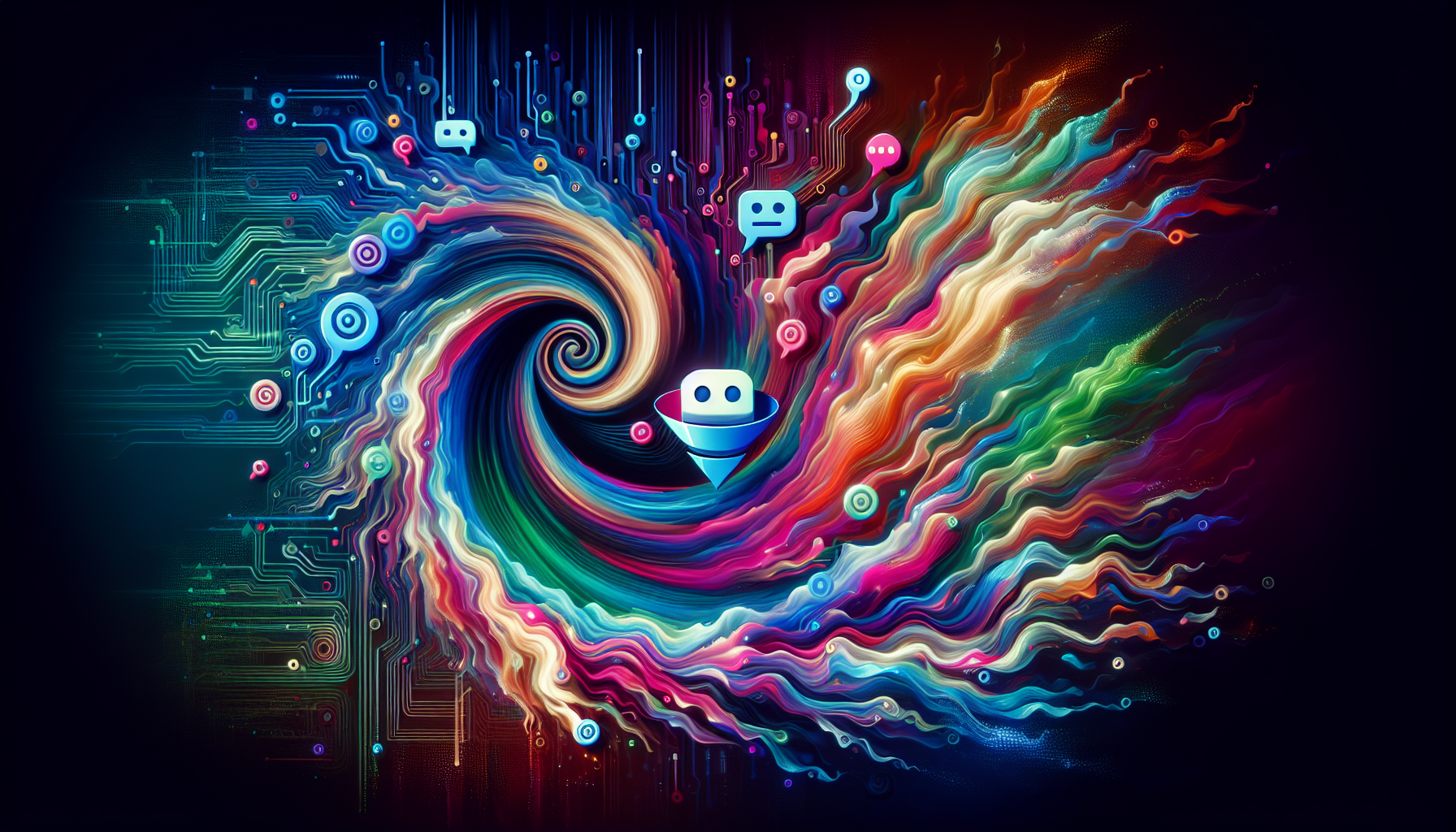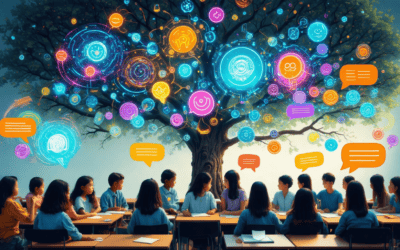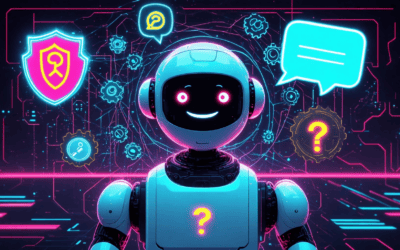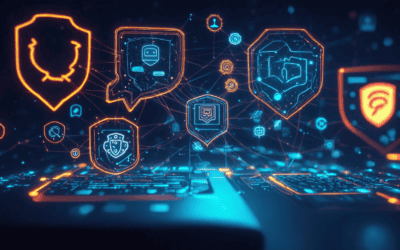In today’s digital landscape, the chatbot funnel has emerged as a powerful tool for businesses seeking to enhance user engagement and streamline customer interactions. This article, titled How to Create an Engaging Chatbot Funnel: Unlocking the Power of AI for Fun and Effective Conversations, will delve into the essentials of chatbot funnels, exploring their key components and the role of AI in optimizing these interactions. We will discuss how chatbot funnels can significantly improve customer experiences, the different types of chatbots available, and the innovative 3 funnel strategy that can lead to success. Additionally, we will provide insights into free tools for creating effective chat funnels and examine the unique advantages of leveraging messenger funnels for business growth. Whether you’re curious about funny chatbots or looking for practical chatbot conversation examples, this article will equip you with the knowledge to harness the full potential of chatbot technology.
What is a Chatbot Funnel?
A chatbot funnel is a strategically designed pathway that guides user interactions through a chatbot interface, facilitating a seamless journey from initial contact to a specific goal, such as lead generation, sales conversion, or customer support resolution.
Understanding the Basics of Chatbot Funnels
Chatbot funnels are essential tools for enhancing user engagement and driving conversions. They operate through a series of stages that help businesses connect with their audience effectively. By understanding these stages, you can create a more impactful chatbot experience.
Understanding the Stages of a Chatbot Funnel
- Awareness: The user first interacts with the chatbot, often through a website, social media, or messaging app. This stage focuses on capturing attention and introducing the chatbot’s capabilities.
- Engagement: At this stage, the chatbot asks questions to understand user needs and preferences, providing personalized responses that enhance user experience.
- Conversion: The ultimate goal of the chatbot funnel, where the user is guided to take a specific action, such as making a purchase, signing up for a newsletter, or booking a service.
- Retention: Post-conversion, the chatbot can follow up with users to ensure satisfaction, gather feedback, and encourage repeat interactions.
Key Components of an Effective Chatbot Funnel
To create an effective chatbot funnel, consider the following best practices:
- Define Clear Objectives: Establish what you want to achieve with your chatbot funnel, whether it’s increasing sales, improving customer service, or gathering leads.
- Utilize Conversational Design: Create a natural and engaging dialogue flow that mimics human conversation, making interactions feel intuitive and friendly.
- Incorporate Personalization: Use data and user behavior to tailor responses, enhancing relevance and increasing the likelihood of conversion.
- Analyze and Optimize: Regularly review chatbot performance metrics, such as user engagement rates and conversion rates, to identify areas for improvement.
Implementing a chatbot funnel not only enhances user engagement but also provides businesses with the tools to operate efficiently and effectively. For more insights on chatbot functionalities, check out Brain Pod AI for innovative AI solutions.
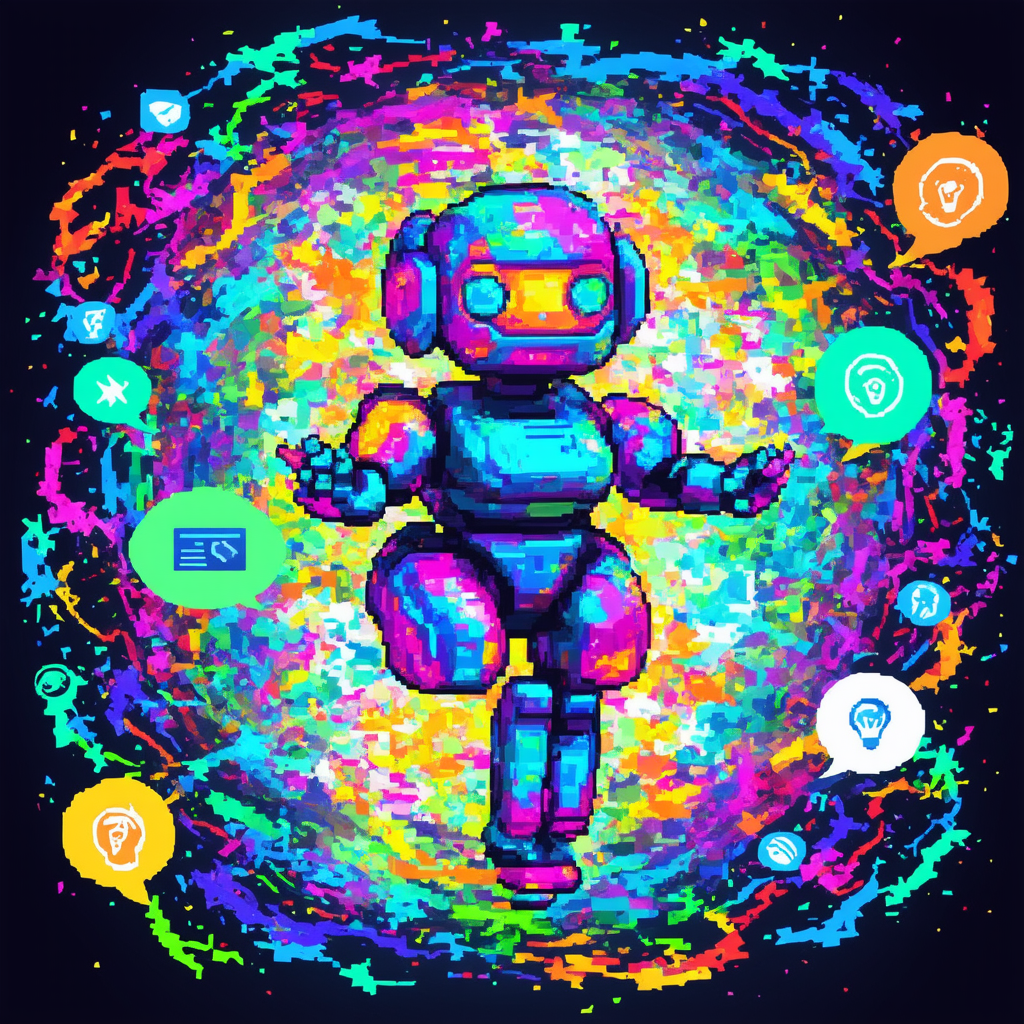
What is a Chatbot Funnel?
A chatbot funnel is a strategic framework designed to guide users through a series of interactions with a chatbot, ultimately leading them to a desired action, such as making a purchase or signing up for a newsletter. By leveraging the capabilities of chatbots, businesses can enhance user engagement and streamline the customer journey. This approach not only improves customer satisfaction but also increases conversion rates, making it an essential tool for modern digital marketing.
Understanding the Basics of Chatbot Funnels
Chatbot funnels are built on the premise of creating meaningful interactions between users and chatbots. These interactions are designed to be intuitive and engaging, ensuring that users feel understood and valued. By utilizing a chatbot funnel, businesses can effectively manage customer inquiries, provide personalized recommendations, and facilitate seamless transactions.
How Chatbot Funnels Enhance User Engagement
One of the primary benefits of chatbot funnels is their ability to enhance user engagement. By providing instant responses and personalized interactions, chatbots can keep users interested and encourage them to explore further. For instance, a well-designed chatbot conversation example can guide users through product selections, answer questions, and even offer discounts, all while maintaining a conversational tone. This level of interaction not only improves user experience but also fosters brand loyalty.
Key Components of an Effective Chatbot Funnel
To create a successful chatbot funnel, several key components must be considered:
- Clear Objectives: Define the primary goals of the chatbot funnel, whether it’s lead generation, customer support, or sales.
- User-Centric Design: Ensure that the chatbot is designed with the user in mind, providing intuitive navigation and relevant responses.
- Data Integration: Utilize data from various sources to personalize interactions and improve the relevance of bot responses.
- Analytics and Optimization: Continuously monitor the performance of the chatbot funnel and make adjustments based on user feedback and analytics.
By focusing on these components, businesses can create effective chatbot funnels that not only meet user needs but also drive conversions.
What is AI Funnels?
AI funnels refer to advanced marketing tools that leverage artificial intelligence to optimize the customer journey and enhance data-driven decision-making. These funnels utilize generative AI technologies to streamline the process of organizing, analyzing, and interpreting vast amounts of data, ultimately leading to actionable insights. Here are key components and benefits of AI funnels:
- Data Organization: AI funnels automatically categorize and structure data from various sources, making it easier for marketers to access relevant information quickly.
- Insight Generation: By employing machine learning algorithms, AI funnels identify patterns and anomalies within data sets, enabling marketers to uncover hidden opportunities and potential risks.
- Customer Segmentation: AI funnels enhance customer targeting by analyzing behavior and preferences, allowing for more personalized marketing strategies that resonate with specific audience segments.
- Predictive Analytics: These tools can forecast customer behavior and trends, helping businesses to anticipate market changes and adjust their strategies proactively.
- Performance Optimization: AI funnels continuously monitor campaign performance, providing real-time analytics that help marketers refine their tactics for better results.
- Automation: By automating repetitive tasks, AI funnels free up valuable time for marketers to focus on strategy and creative initiatives.
Recent studies indicate that businesses utilizing AI-driven marketing funnels experience a significant increase in conversion rates and customer engagement (Source: McKinsey & Company, 2023). As the marketing landscape evolves, integrating AI funnels into your strategy is essential for staying competitive and maximizing ROI (Source: Harvard Business Review, 2023).
What is a Chatbot Funnel?
A chatbot funnel is a structured pathway designed to guide users through a series of interactions with a chatbot, ultimately leading them towards a specific goal, such as making a purchase or signing up for a newsletter. By leveraging the capabilities of chatbots, businesses can enhance user engagement and streamline the customer journey. Understanding the basics of chatbot funnels is essential for optimizing interactions and improving conversion rates.
Understanding the Basics of Chatbot Funnels
Chatbot funnels enhance user engagement by providing a seamless and interactive experience. They allow users to communicate with a chatbot in a conversational manner, making it feel like they are talking to a robot that understands their needs. This interaction can significantly improve customer satisfaction and retention.
How Chatbot Funnels Enhance User Engagement
One of the primary ways chatbot funnels enhance user engagement is through personalized interactions. By utilizing data from previous conversations, chatbots can tailor their responses to meet individual user preferences. This level of personalization not only keeps users engaged but also encourages them to explore further, leading to higher conversion rates. For example, a well-designed chatbot conversation example can guide users through product recommendations based on their interests.
Key Components of an Effective Chatbot Funnel
An effective chatbot funnel consists of several key components:
- Clear Objectives: Define what you want to achieve with your chatbot funnel, whether it’s lead generation, customer support, or sales.
- User-Friendly Design: Ensure the chatbot interface is intuitive and easy to navigate, allowing users to interact without confusion.
- Engaging Content: Use engaging and relevant content to keep users interested. Incorporating funny chatbots or funny AI chatbots can add a light-hearted touch to the interaction.
- Analytics and Optimization: Regularly analyze user interactions to identify areas for improvement. This can help refine the chatbot flow examples and enhance overall performance.
The Role of AI in Chatbot Funnels
Integrating AI into chatbot funnels can significantly enhance their effectiveness. AI-powered chatbots can learn from user interactions, improving their responses and making them more relevant over time. This adaptability is crucial for maintaining user engagement and satisfaction.
Benefits of Integrating AI into Chat Funnels
AI integration offers several benefits, including:
- Improved Accuracy: AI chatbots can understand natural language, allowing for more accurate responses to user queries.
- 24/7 Availability: AI chatbots can operate around the clock, providing instant support to users regardless of the time.
- Scalability: Businesses can handle a larger volume of inquiries without the need for additional human resources.
How AI Chat Funnels Improve Customer Interactions
AI chat funnels improve customer interactions by providing personalized experiences. For instance, they can analyze user behavior and preferences to offer tailored recommendations, enhancing the overall user experience. Additionally, AI chatbots can manage complex queries more effectively than traditional chatbots, ensuring that users receive the assistance they need promptly.
Implementing the 3 Funnel Strategy for Success
To maximize the effectiveness of a chatbot funnel, it’s essential to implement the 3 Funnel Strategy. This approach guides potential customers through their journey from awareness to conversion, ensuring that each stage is tailored to meet their needs. By understanding and applying this strategy, businesses can enhance user engagement and drive conversions effectively.
Steps to Create an Effective Chat Funnel
Creating a successful chat funnel involves several key steps:
- Define Your Audience: Understanding who your target audience is will help tailor your chatbot interactions to meet their specific needs.
- Map Out the Customer Journey: Identify the stages your customers go through, from awareness to conversion, and design your chatbot conversations accordingly.
- Develop Engaging Content: Use engaging and relevant content that resonates with your audience at each stage of the funnel. This includes FAQs, product information, and personalized recommendations.
- Integrate with Other Marketing Channels: Ensure your chatbot works seamlessly with other marketing efforts, such as email campaigns and social media, to create a cohesive experience.
- Test and Optimize: Regularly test your chatbot interactions and gather feedback to optimize the conversation flow and improve user experience.
Best Chatbot Experiences Using the 3 Funnel Strategy
Implementing the 3 Funnel Strategy can lead to some of the best chatbot experiences. Here are a few examples:
- Personalized Recommendations: Chatbots can analyze user behavior and preferences to provide tailored product suggestions, enhancing the customer experience.
- Interactive Quizzes: Engaging users with quizzes can help guide them through the funnel while collecting valuable data for future interactions.
- Seamless Transition to Human Agents: When necessary, chatbots can smoothly transfer users to human agents, ensuring that complex queries are handled efficiently.
By leveraging the 3 Funnel Strategy, businesses can create effective chatbot funnels that not only engage users but also drive conversions and foster customer loyalty.

Understanding the Mechanics of Chat Funnels
A chatbot funnel is a structured approach to guiding users through a conversation with a chatbot, ultimately leading them to a desired action, such as making a purchase or signing up for a newsletter. By understanding how a funnel works, businesses can optimize their chatbot interactions to enhance user experience and drive conversions. Here’s a detailed breakdown of the mechanics involved in a typical chatbot funnel:
Chatbot Conversation Flow Example for Better Clarity
The conversation flow in a chatbot funnel is crucial for maintaining user engagement. A well-designed chatbot conversation flow example typically includes several key stages:
- Greeting: The chatbot initiates the conversation with a friendly greeting, setting a positive tone for the interaction.
- Qualifying Questions: The bot asks questions to understand the user’s needs better, which helps in personalizing the conversation.
- Providing Information: Based on the user’s responses, the chatbot delivers relevant information or options, guiding them toward their goal.
- Call to Action: The conversation culminates in a clear call to action, encouraging the user to take the next step, whether it’s making a purchase or signing up for more information.
By implementing a structured flow, businesses can ensure that users feel supported throughout their journey, ultimately leading to higher conversion rates.
Analyzing Chatbot Flow Examples for Optimization
To maximize the effectiveness of a chatbot funnel, it’s essential to analyze chatbot flow examples and identify areas for improvement. Key factors to consider include:
- User Engagement: Monitor how users interact with the chatbot. Are they dropping off at any particular stage? Understanding these patterns can help refine the flow.
- Response Accuracy: Evaluate the accuracy of the bot’s responses. Are users satisfied with the information provided? Regular updates and training can enhance the chatbot’s performance.
- Conversion Rates: Track the conversion rates at each stage of the funnel. This data can inform adjustments to the conversation flow, ensuring it aligns with user expectations and needs.
By continuously optimizing the chatbot flow, businesses can create a more effective chatbot conversation example that resonates with users and drives engagement.
Demystifying Chatbots and Their Functions
A chatbot is an advanced computer program designed to simulate human conversation with users through text or voice interactions. While not all chatbots utilize artificial intelligence (AI), the latest iterations increasingly incorporate sophisticated conversational AI techniques, particularly natural language processing (NLP). This allows them to comprehend user inquiries more effectively and generate automated responses that feel more human-like.
Funny Chatbots: Engaging Users with Humor
Humor can be a powerful tool in enhancing user engagement, and funny chatbots are designed to leverage this by incorporating wit and playful banter into their interactions. These chatbots can lighten the mood during conversations, making the user experience more enjoyable. For instance, chatbots like Brain Pod AI showcase how humor can be effectively integrated into customer interactions, providing a memorable experience that encourages users to return.
Examples of chatbot interactions that utilize humor include playful responses to common queries or light-hearted jokes that can make the conversation feel more personal. This approach not only entertains users but also helps in building a rapport, which can lead to increased customer loyalty and satisfaction. The funniest chatbots often become memorable for their unique personalities, making them stand out in a crowded digital landscape.
AI Chatbots for Fun: Examples of Bot Interactions
AI chatbots for fun are designed to engage users in a light-hearted manner while still providing valuable interactions. These bots can be programmed to tell jokes, share interesting trivia, or even engage in playful banter. For example, a chatbot might respond to a user asking about the weather with a humorous quip about needing an umbrella for a “monsoon of cats and dogs.”
Such interactions not only entertain but also showcase the capabilities of AI in understanding context and delivering relevant responses. Chatbot examples in various industries, from entertainment to e-commerce, demonstrate how humor can be effectively used to enhance user experience. By integrating funny chatbot elements, businesses can create a more engaging and enjoyable interaction, which can lead to higher retention rates and customer satisfaction.
What is a chatbot funnel?
A chatbot funnel is a structured pathway designed to guide users through a series of interactions with a chatbot, ultimately leading to a specific goal, such as making a purchase, signing up for a newsletter, or obtaining information. By utilizing automated responses and engaging conversation flows, chatbot funnels enhance user experience and streamline the customer journey. This approach not only improves engagement but also increases conversion rates by providing users with relevant information at each stage of their interaction.
Understanding the Basics of Chatbot Funnels
Chatbot funnels are essential for businesses looking to optimize their customer interactions. They work by segmenting users based on their responses and guiding them through tailored conversations. This method ensures that users receive personalized experiences, which can significantly enhance user engagement. For instance, a well-designed chatbot conversation example can illustrate how different paths can lead to various outcomes, depending on user input.
How chatbot funnels enhance user engagement
Chatbot funnels enhance user engagement by providing immediate responses and relevant information tailored to the user’s needs. By utilizing AI chatbots for fun interactions, businesses can create a more enjoyable experience that keeps users interested. For example, incorporating funny chatbots can lighten the mood and encourage users to interact more freely, leading to higher engagement rates. Additionally, the ability to automate responses allows businesses to maintain a consistent presence, ensuring users feel valued and attended to at all times.
Key components of an effective chatbot funnel
An effective chatbot funnel consists of several key components:
- Clear Objectives: Define what you want to achieve with your chatbot funnel, whether it’s lead generation, customer support, or sales.
- User Segmentation: Tailor conversations based on user demographics and behavior to provide personalized experiences.
- Engaging Content: Use interactive elements, such as quizzes or polls, to keep users engaged and encourage participation.
- Analytics and Optimization: Regularly analyze user interactions to identify areas for improvement and optimize the funnel for better performance.
By focusing on these components, businesses can create effective chat funnels that not only engage users but also drive conversions.
